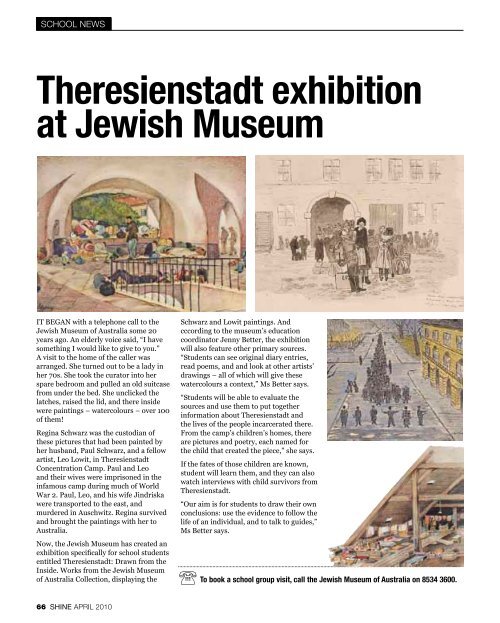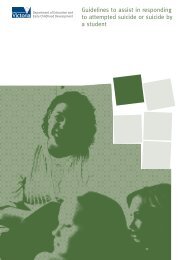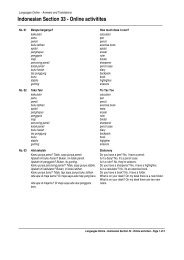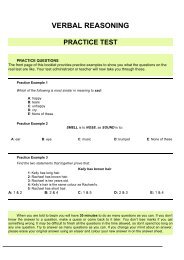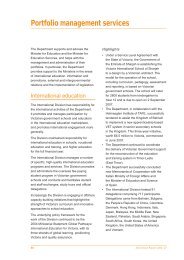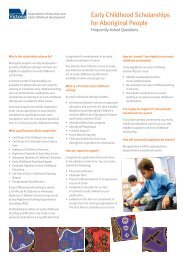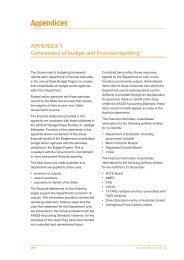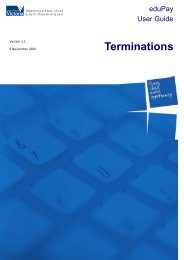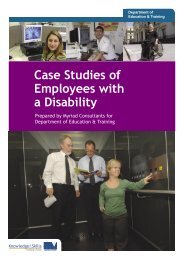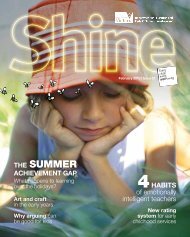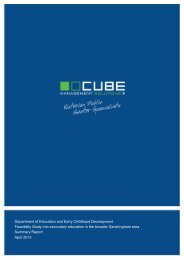Shine Magazine, Issue 3, April 2010 - Department of Education and ...
Shine Magazine, Issue 3, April 2010 - Department of Education and ...
Shine Magazine, Issue 3, April 2010 - Department of Education and ...
You also want an ePaper? Increase the reach of your titles
YUMPU automatically turns print PDFs into web optimized ePapers that Google loves.
School news<br />
Theresienstadt exhibition<br />
at Jewish Museum<br />
It beGAn with a telephone call to the<br />
Jewish Museum <strong>of</strong> Australia some 20<br />
years ago. An elderly voice said, “I have<br />
something I would like to give to you.”<br />
A visit to the home <strong>of</strong> the caller was<br />
arranged. She turned out to be a lady in<br />
her 70s. She took the curator into her<br />
spare bedroom <strong>and</strong> pulled an old suitcase<br />
from under the bed. She unclicked the<br />
latches, raised the lid, <strong>and</strong> there inside<br />
were paintings – watercolours – over 100<br />
<strong>of</strong> them!<br />
Regina Schwarz was the custodian <strong>of</strong><br />
these pictures that had been painted by<br />
her husb<strong>and</strong>, Paul Schwarz, <strong>and</strong> a fellow<br />
artist, Leo Lowit, in Theresienstadt<br />
Concentration Camp. Paul <strong>and</strong> Leo<br />
<strong>and</strong> their wives were imprisoned in the<br />
infamous camp during much <strong>of</strong> World<br />
War 2. Paul, Leo, <strong>and</strong> his wife Jindriska<br />
were transported to the east, <strong>and</strong><br />
murdered in Auschwitz. Regina survived<br />
<strong>and</strong> brought the paintings with her to<br />
Australia.<br />
Now, the Jewish Museum has created an<br />
exhibition specifically for school students<br />
entitled Theresienstadt: Drawn from the<br />
Inside. Works from the Jewish Museum<br />
<strong>of</strong> Australia Collection, displaying the<br />
Schwarz <strong>and</strong> Lowit paintings. And<br />
cccording to the museum’s education<br />
coordinator Jenny Better, the exhibition<br />
will also feature other primary sources.<br />
“Students can see original diary entries,<br />
read poems, <strong>and</strong> <strong>and</strong> look at other artists’<br />
drawings – all <strong>of</strong> which will give these<br />
watercolours a context,” Ms Better says.<br />
“Students will be able to evaluate the<br />
sources <strong>and</strong> use them to put together<br />
information about Theresienstadt <strong>and</strong><br />
the lives <strong>of</strong> the people incarcerated there.<br />
From the camp’s children’s homes, there<br />
are pictures <strong>and</strong> poetry, each named for<br />
the child that created the piece,” she says.<br />
If the fates <strong>of</strong> those children are known,<br />
student will learn them, <strong>and</strong> they can also<br />
watch interviews with child survivors from<br />
Theresienstadt.<br />
“Our aim is for students to draw their own<br />
conclusions: use the evidence to follow the<br />
life <strong>of</strong> an individual, <strong>and</strong> to talk to guides,”<br />
Ms Better says.<br />
To book a school group visit, call the Jewish Museum <strong>of</strong> Australia on 8534 3600.<br />
66 <strong>Shine</strong> APRIL <strong>2010</strong>


